Hey Reader !!!
In this post let's learn some of the annotations used in Spring and Spring-Boot Frameworks !!!
The contents of the blog include:
- Class level annotations
- Property and method level annotations
- Transaction based annotations
- Entity based annotations
Class level annotations
@SpringBootApplication
- This is the entry point of spring application and is the class level annotation, the class contains this annotation and the main method.
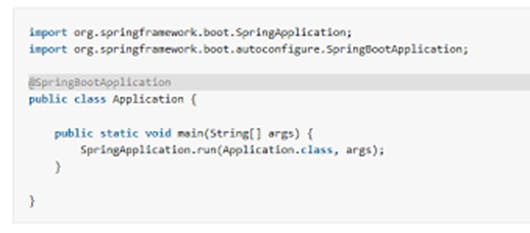
- @ SpringBootApplication is equivalent to using @Configuration, @EnableAutoConfiguration, and @ComponentScan with their default attributes.
- @EnableAutoConfiguration: enable Spring Boot’s auto-configuration mechanism
- @ComponentScan: enable @Component scan on the package where the application is located (see the best practices)
- @Configuration: allow to register extra beans in the context or import additional configuration classes

@ComponentScan – Spring boot automatically scans all the components included in the project using the above annotation. This is a class level annotation.

@RestController
- it is a class level annotation, it returns the object. And object data is directly written in HTTP response as JSON or XML. Used for crating RESTful controller.
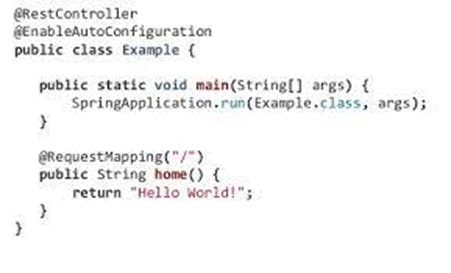
@Controller
- It is a class level annotation, it makes the class human readable by making the model object to view or template.

@Autowired
- Spring provides annotation based auto-wiring by providing @autowired annotation.
- It is used to autowire spring bean on setter methods, instance variables and
constructors. - When we use @Autowired annotation, the spring container auto-wires the bean by
matching data-type.

@Component
- It indicates that an annotated class is a component. Such classes are considered as candidates for auto-direction when using annotation based configuration and classpath scanning.

@Qualifier
- It is a property level annotation, when you create more than one bean of the same type and want to wire only one of them with a property.
- In such case you can use @Qualifier along with @autowired to remove the confusion by specifying which exact bean will be wired.
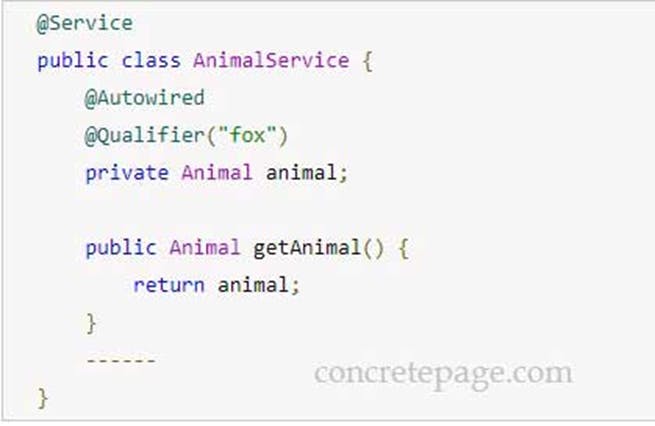
@Service
- is used with classes that provide some business functionalities.
- Spring context will autodetect these classes when annotation-based configuration and classpath scanning is used.

@PropertySource
- used to provide properties file to Spring Environment.
- It represents a set of property pairs from a particular source

@CrossOrigin
- It enables cross-origin resource sharing only for this specific method.
- By default, its allows all origins, all headers, and the HTTP methods specified in the @RequestMapping annotation.
- Also, a maxAge of 30 minutes is used. You can customize this behavior by specifying the value.

@Scope
- As with Spring-managed components in general, the default and most common scope for autodetected components is singleton.
- To change this default behavior, use @Scope spring annotation.

@SessionAttributes
- This will list the names of model attributes which should be transparently stored in the session, serving as form-backing beans between subsequent requests.

Method level or Property level annotations
@RequestMapping
- RequestMapping annotation is used to map web requests onto specific handler classes and/or handler methods.
- @RequestMapping can be applied to the controller class as well as methods.
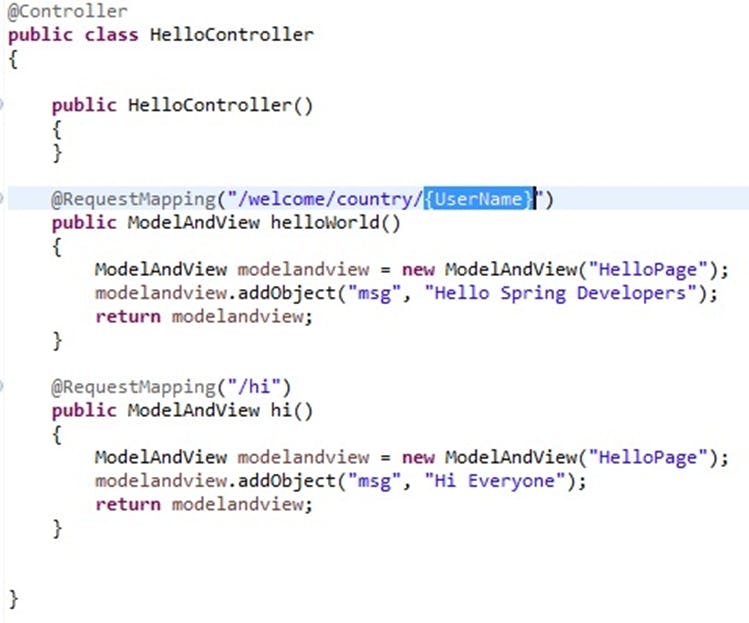
@ExceptionHandler
- It allows us to handle specified types of exceptions through one single method.
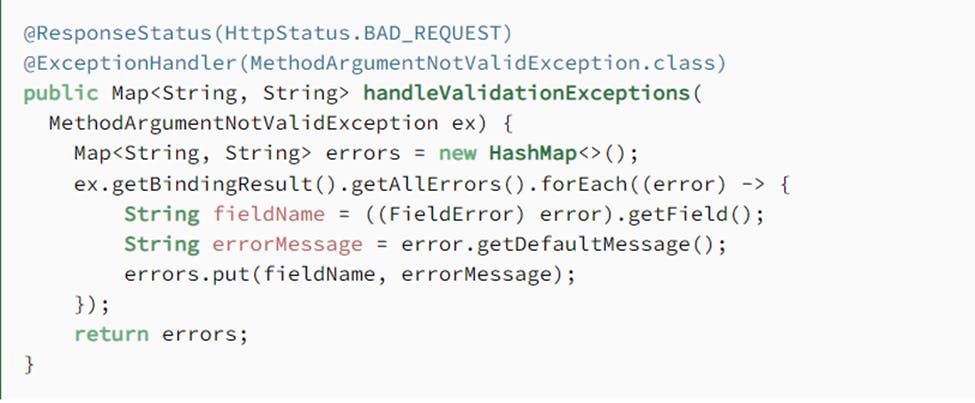
@Bean
- Indicates that a method produces a bean to be managed by the Spring container.
- This is one of the most used and important spring annotation.
- @Bean annotation also can be used with parameters like name, initMethod and
destroyMethod.
• name – allows you give name for bean • initMethod – allows you to choose method which will be invoked on context register • destroyMethod – allows you to choose method which will be invoked on context shutdown

@PreDestroy and @PostConstruct are alternative way for bean initMethod and destroyMethod. It can be used when the bean class is defined by us. For example;

@Path
- The @Path annotation’s value is a relative URI path indicating where the Java class will be hosted: for example, /helloworld.
- You can also embed variables in the URIs to make a URI path template. For example, you could ask for the name of a user and pass it to the application as a variable in the URI: /helloworld/{username}.
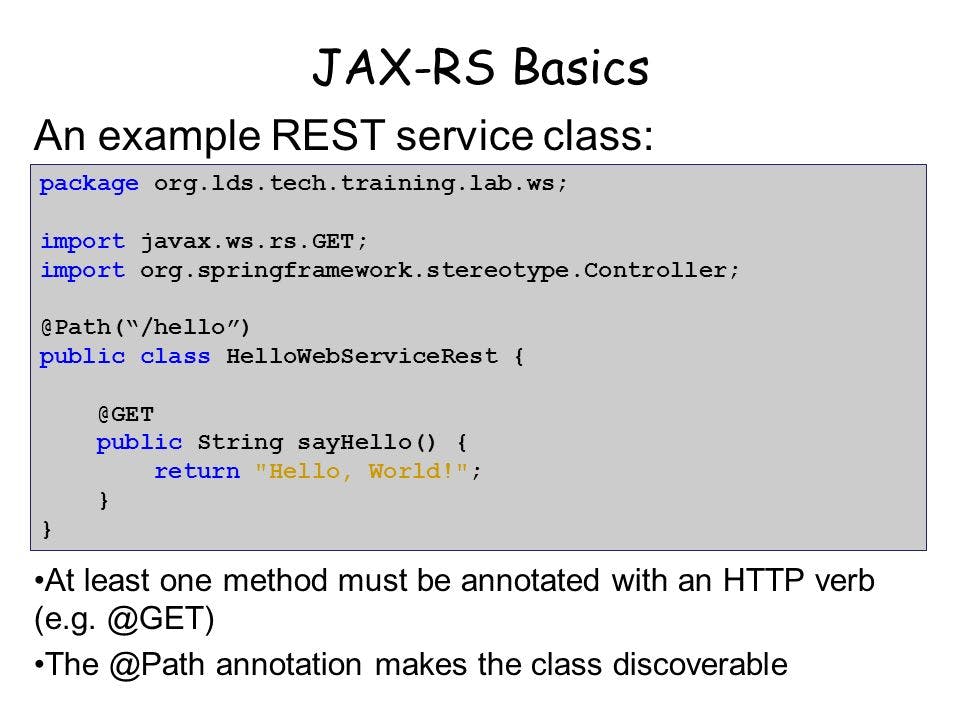
@GetMapping
- The @GET annotation is a request method designator and corresponds to the similarly named HTTP method.
- The Java method annotated with this request method designator will process HTTP GET requests.
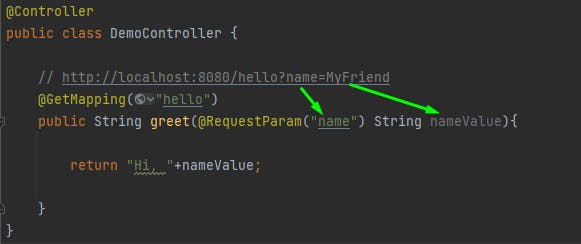
@PostMapping
- The @POST annotation is a request method designator and corresponds to the similarly
named HTTP method.
- The Java method annotated with this request method designator will process HTTP POST requests.
@PutMapping
- The @PUT annotation is a request method designator and corresponds to the similarly named HTTP method.
- The Java method annotated with this request method designator will process HTTP PUT requests.
@DeleteMapping
- The @DELETE annotation is a request method designator and corresponds to the
similarly named HTTP method.
- The Java method annotated with this request method designator will process HTTP DELETE requests.
@Head
- The @HEAD annotation is a request method designator and corresponds to the similarly named HTTP method.
- The Java method annotated with this request method designator will process HTTP HEAD requests.
@PathParam
- The @PathParam annotation is a type of parameter that you can extract for use in your resource class.
- URI path parameters are extracted from the request URI, and the parameter names correspond to the URI path template variable names specified in the @Path class-level annotation.
@QueryParam
- The @QueryParam annotation is a type of parameter that you can extract for use in your resource class.
- Query parameters are extracted from the request URI query parameters.
@Consumes
- The @Consumes annotation is used to specify the MIME media types of representations a resource can consume that were sent by the client.
@Produces
- The @Produces annotation is used to specify the MIME media types of representations a resource can produce and send back to the client: for example, "text/plain".
Spring Transaction Management Annotations
@Transactional
- The @Transactional annotation is the metadata that specifies the semantics of the transactions on a method. We have two ways to rollback a transaction: declarative and programmatic.
- In the declarative approach, we annotate the methods with the @Transactional annotation.
- The @Transactional annotation makes use of the attributes rollbackFor or rollbackForClassName to rollback the transactions, and the attributes noRollbackFor or noRollbackForClassName to avoid rollback on listed exceptions.
- The default rollback behavior in the declarative approach will rollback on runtime exceptions.
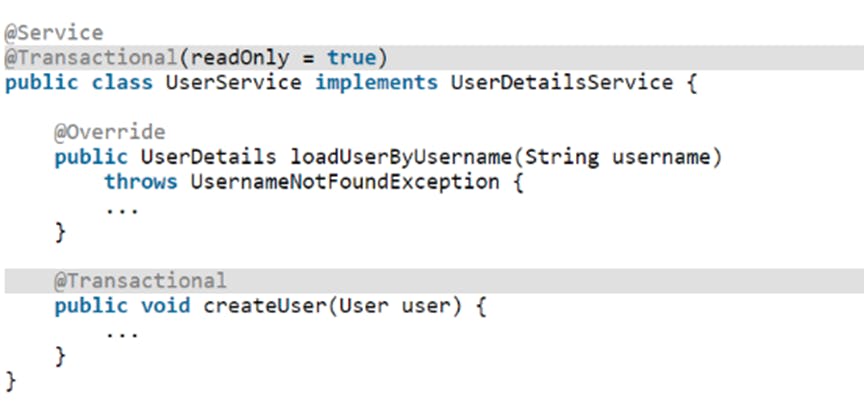

Spring entity validation annotations:
@Entity
- It specifies that the class is an entity and is mapped to a database table.
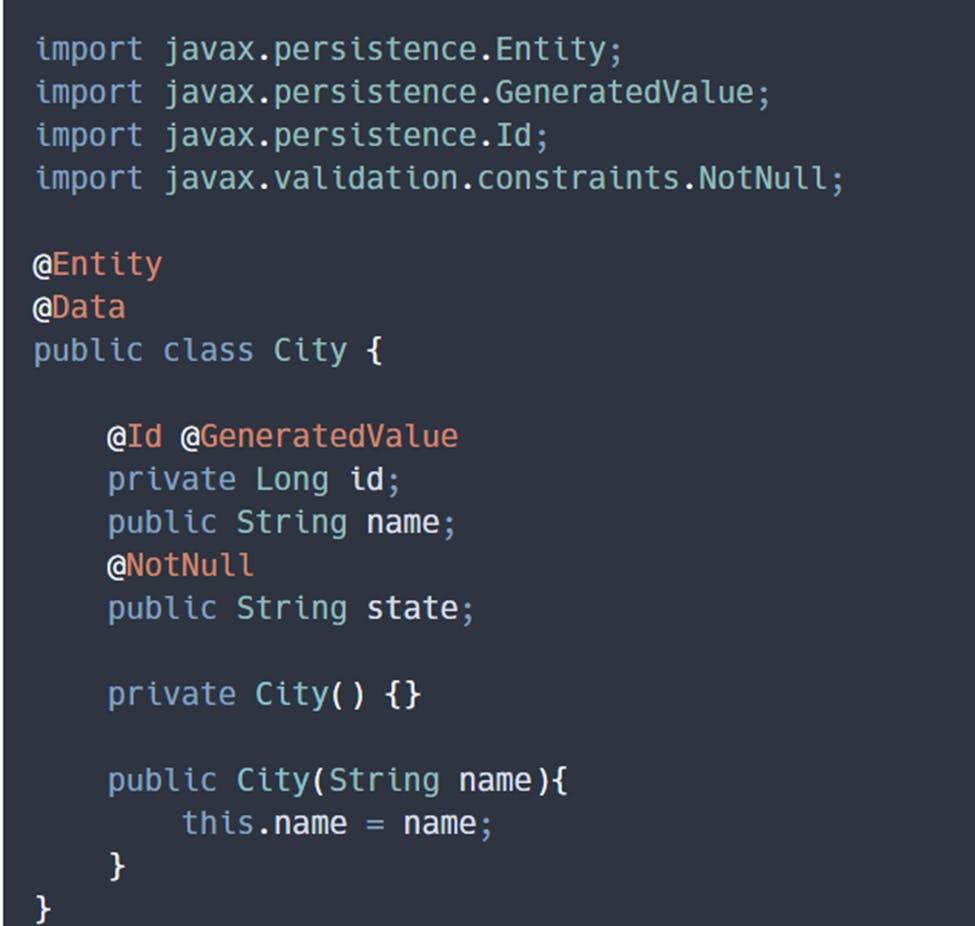
@NotEmpty
- to say that a list field must not empty.
@NotNull
- to say that a field must not be null.
@NotBlank
- to say that a string field must not be the empty string (i.e. it must have at least one character).
@Min and @Max
to say that a numerical field is only valid when it’s value is above or below a certain value.@Pattern
- to say that a string field is only valid when it matches a certain regular expression.

@Validated
- is a class-level annotation that we can use to tell Spring to validate parameters that are passed into a method of the annotated class.
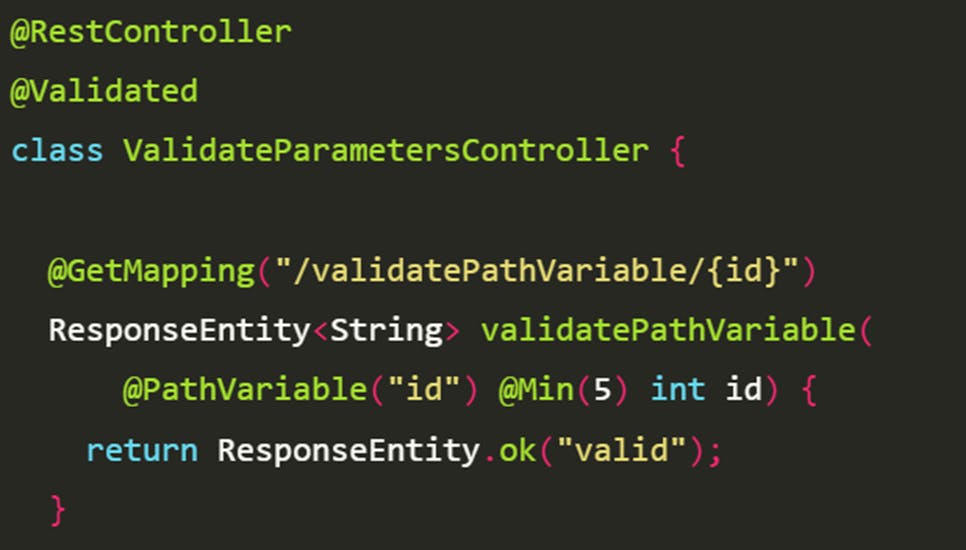
@Valid
- annotation on method parameters and fields to tell Spring that we want a method parameter or field to be validated.
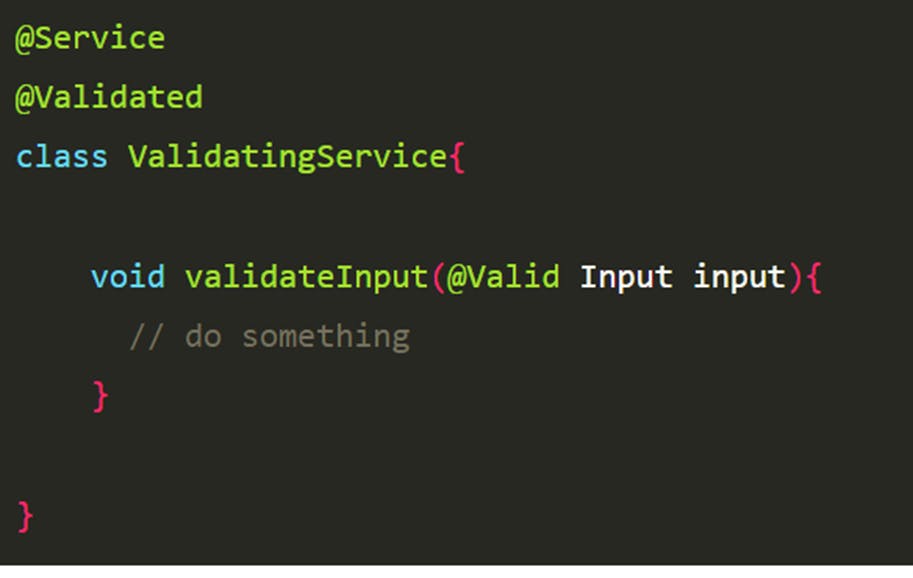
Thank you for reading, Please like the article, It will encourage me to write more such articles. Do share your valuable suggestions, I appreciate your honest feedback!!